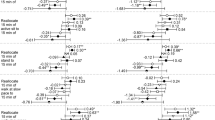Abstract
Recent evidence demonstrates the independent negative effects of sedentary behavior on health, but there are few objective measures of sedentary behavior. Most instruments measure physical activity and are not validated as measures of sedentary behavior. The purpose of this study was to evaluate the validity of the IDEEA system’s measures of sedentary and low-intensity physical activities: lying, reclining, sitting and standing. Thirty subjects, 14 men and 16 women, aged 23 to 77 years, body mass index (BMI) between 18 to 34 kg/m2, participated in the study. IDEEA measures were compared to direct observation for 27 activities: 10 lying in bed, 3 lying on a sofa, 1 reclining in a lawn chair, 10 sitting and 3 standing. Two measures are reported, the percentage of activities accurately identified and the percentage of monitored time that was accurately labeled by the IDEEA system for all subjects. A total of 91.6% of all observed activities were accurately identified and 92.4% of the total monitored time was accurately labeled. The IDEEA system did not accurately differentiate between lying and reclining so the two activities were combined for calculating accuracy. Using this approach the IDEEA system accurately identified 96% of sitting activities for a total of 97% of the monitored sitting time, 99% and 99% for standing, 87% and 88% for lying in bed, 87% and 88% for lying on the sofa, and 83% and 83% for reclining on a lawn chair. We conclude that the IDEEA system accurately recognizes sitting and standing positions, but it is less accurate in identifying lying and reclining positions. We recommend combining the lying and reclining activities to improve accuracy. The IDEEA system enables researchers to monitor lying, reclining, sitting and standing with a reasonable level of accuracy and has the potential to advance the science of sedentary behaviors and low-intensity physical activities.
Similar content being viewed by others
References
Bauman A, Ainsworth BE, Sallis JF, Hagströmer M, Craig CL, Bull FC, Pratt M, Venugopal K, Chau J, Sjöström M; IPS Group. The descriptive epidemiology of sitting. A 20-country comparison using the International Physical Activity Questionnaire (IPAQ). Am J Prev Med 2011; 41(2): 228–235
Hamilton MT, Hamilton DG, Zderic TW. Role of low energy expenditure and sitting in obesity, metabolic syndrome, type 2 diabetes, and cardiovascular disease. Diabetes 2007; 56(11): 2655–2667
Owen N, Healy GN, Matthews CE, Dunstan DW. Too much sitting: the population health science of sedentary behavior. Exerc Sport Sci Rev 2010; 38(3): 105–113
Santos D, Silva A, Baptista F, Santos R, Vale S, Mota J, Sardinha LB. Sedentary behavior and physical activity are independently related to functional fitness in older adults. Exp Gerontol 2012; 47(12): 908–912
Katzmarzyk PT, Church TS, Craig CL, Bouchard C. Sitting time and mortality from all causes, cardiovascular disease, and cancer. Med Sci Sports Exerc 2009; 41(5): 998–1005
Katzmarzyk PT, Lee IM. Sedentary behaviour and life expectancy in the USA: a cause-deleted life table analysis. BMJ Open 2012; 2(4): e000828
Shephard RJ. Limits to the measurement of habitual physical activity by questionnaires. Br J Sports Med 2003; 37(3): 197–206, discussion 206
Prince SA, Adamo KB, Hamel ME, Hardt J, Gorber SC, Tremblay M. A comparison of direct versus self-report measures for assessing physical activity in adults: a systematic review. Int J Behav Nutr Phys Act 2008; 5(1): 56
Klesges RC, Eck LH, Mellon MW, Fulliton W, Somes GW, Hanson CL. The accuracy of self-reports of physical activity. Med Sci Sports Exerc 1990; 22(5): 690–697
Zhang K, Werner P, Sun M, Pi-Sunyer FX, Boozer CN. Measurement of human daily physical activity. Obes Res 2003; 11(1): 33–40
Mackey AH, Hewart P, Walt SE, Stott NS. The sensitivity and specificity of an activity monitor in detecting functional activities in young people with cerebral palsy. Arch Phys Med Rehabil 2009; 90(8): 1396–1401
Zhang K, Pi-Sunyer FX, Boozer CN. Improving energy expenditure estimation for physical activity. Med Sci Sports Exerc 2004; 36(5): 883–889
Ainsworth BE. The compendium of physical activities tracking guide. 2002. http://prevention.sph.sc.edu/tools/docs/documents_compendium.pdf (Accessed on June 19, 2010)
Whybrow S, Ritz P, Horgan G, Stubbs R. An evaluation of the IDEEATM activity monitor for estimating energy expenditure. Br J Nutr 2012 Apri 2. [Epub ahead of print] doi: 10.1017/S0007114512000645
Ainsworth BE, Haskell WL, Whitt MC, Irwin ML, Swartz AM, Strath SJ, O’Brien WL, Bassett DR Jr, Schmitz KH, Emplaincourt PO, Jacobs DR Jr, Leon AS. Compendium of physical activities: an update of activity codes and MET intensities. Med Sci Sports Exerc 2000; 32(9 Suppl): S498–S504
Sahlin C, Franklin KA, Stenlund H, Lindberg E. Sleep in women: Normal values for sleep stages and position and the effect of age, obesity, sleep apnea, smoking, alcohol and hypertension. Sleep Med 2009; 10(9): 1025–1030
Gordon S, Grimmer-Sommers K, Trott P. Sleep position, age, gender, sleep quality and waking cervico-thoracic symptoms. Internet J Allied Health Sci Pract 2007;5(1):8. http://ijahsp.nova.edu (Accessed on February 3, 2011)
Thorp A, Healy G, Owen N, Salmon J, Ball K, Shaw JE, Zimmet PZ, Dunstan DW. Deleterious associations of sitting time and television viewing time with cardio-metabolic risk biomarkers: AusDiab 2004–2005. Diabetes Care 2010; 33(2): 327–334
Helmerhorst HJ, Wijndaele K, Brage S, Wareham NJ, Ekelund U. Objectively measured sedentary time may predict insulin resistance independent of moderate- and vigorous-intensity physical activity. Diabetes 2009; 58(8): 1776–1779
Wijndaele K, Healy GN, Dunstan DW, Barnett AG, Salmon J, Shaw JE, Zimmet PZ, Owen N. Increased cardiometabolic risk is associated with increased TV viewing time. Med Sci Sports Exerc 2010; 42(8): 1511–1518
Author information
Authors and Affiliations
Corresponding author
Rights and permissions
About this article
Cite this article
Jiang, Y., Larson, J.L. IDEEA activity monitor: validity of activity recognition for lying, reclining, sitting and standing. Front. Med. 7, 126–131 (2013). https://doi.org/10.1007/s11684-012-0236-0
Received:
Accepted:
Published:
Issue Date:
DOI: https://doi.org/10.1007/s11684-012-0236-0




